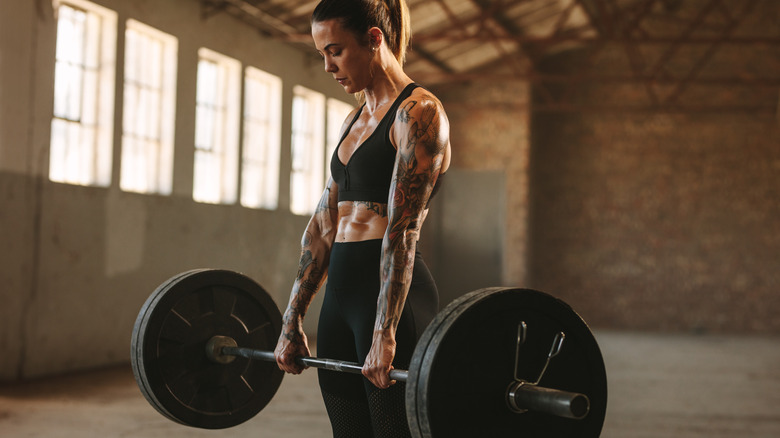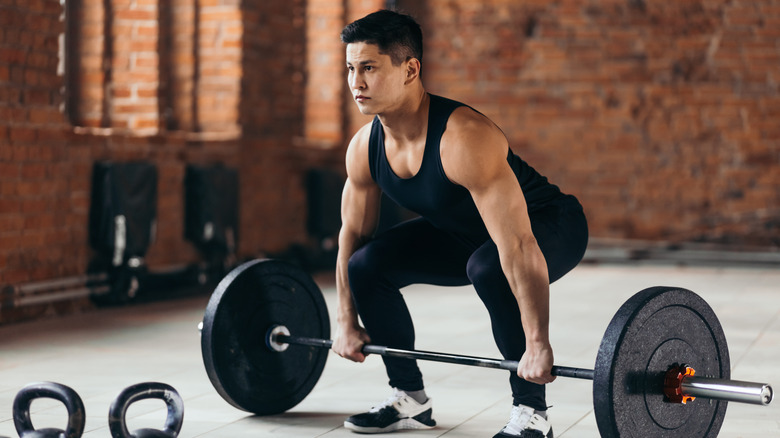You've Been Doing Deadlifts Totally Wrong
Deadlifts look intimidating, at least to those new to weightlifting. To those with experience, they're just an integral part of most workouts. They're a powerhouse move that have been proven to increase a person's overall body strength, as described in a 2018 review published in MOJ Yoga and Physical Therapy.
The review compared the deadlift to other exercises that use just as many muscles and found that the deadlift allowed participants to move more weight and led to a more aware sense of body mechanics that carried over into other exercises.
Another study published in the Journal of Strength and Physical Conditioning Research found that deadlifts — which focus mostly on the lower body — increased participants' vertical jump compared to participants who did not do deadlifts. This benefit came after only doing deadlifts twice a week over the course of ten weeks, making it a great perk for a small investment.
But there is a catch. Deadlifts can only provide these kinds of benefits when done correctly. And while this might sound obvious, the deadlift is incredibly easy to do wrong. You might even be guilty of some common form mistakes and not even realize it.
The biggest mistakes and how to fix them
Health Digest interviewed two faculty members at the University of Mary Hardin-Baylor's School of Exercise and Sports Medicine on the common mistakes people make when performing a deadlift. Dr. Lem Taylor, professor of exercise physiology, had a ready answer. He said the most common issue is too much slack in the arms.
"Before initiating the deadlift, slowly tighten up the slack in your chest, arms, and shoulders so they're all one unit as you lift the weight off the floor."
Instead of tightening the slack, however, most people jerk the barbell up off the floor, which can open them up for injury. Dr. Taylor's colleague, Simone Tucker, went on to explain other mistakes people make. These included rounding the spine, letting their heels come up or their shoulders come forward, and hyperextending the neck.
The proper form, according to Tucker, assistant professor of exercise science, is to keep your feel flat on the floor and a little more than hip-width apart. When you bend to lift the barbell, your hips should always be lower than your shoulders so that when you lift, you do so with your legs and not your back. Your back and shoulders should be aligned and neutral, rather than tensed and stuck out, while your shoulder blades are down and pulled back.
It's a lot to track all at once. But starting with the right form unlocks the real potential of the deadlift and protects you from injury. Run through this checklist the next time you hit the weight room, and see the effects it has on your workout.


